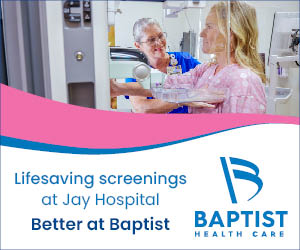Heat Safety
Heat Safety
According to the National Weather Service there is a potential for dangerous heat index values reaching more than 102 degrees over the weekend. Sunday is expected to have the highest heat index, with a forecasted heat index of 107 to 111 degrees. Santa Rosa County Emergency Management reminds residents and visitors to use caution. Do not forget the heat also affects your pets.
The most important step the public can take is to NEVER leave children, the elderly or pets in an unattended vehicle. The temperature in a vehicle can rise 15 – 20 degrees in less than 10 minutes and a child’s body temperature warms at a rate of three to five times faster than that of an adult. Leaving the windows partially rolled down is not sufficient. Even if you plan to be in the store for “just a minute,” your children, the elderly and your pet are at risk of a heat stroke.
What to do during extreme heat conditions:
- Listen to television or radio for current information.
- Stay indoors as much as possible and limit exposure to the sun.
- Stay on the lowest level of your home that is out of the sunshine if air conditioning is not available.
- Instead of outside activities or if you do not have air conditioning, consider spending the warmest part of the day in public buildings such as libraries, movie theatres, shopping malls and other community facilities.
- Dress in light weight, light colored clothing.
- Use sun screen to avoid sun burn, and consider wearing a hat or sunglasses.
- Drink plenty of water and eat well balanced, light and regular meals.
- Make sure pets have plenty of water.
- Check on the elderly or disabled family, friends and neighbors.
Santa Rosa County Animal Services recommends all pet owners follow these simple steps during extreme heat conditions:
- Keep animals out of direct sunlight during the heat of the day, roughly 10 a.m. to 6 p.m.
- Prevent sunburn. Animals can get sunburned too, especially shorthaired dogs, or dogs and cats with pink skin and white hair.
- Always make sure animals have access to fresh water and shade.
- Avoid strenuous exercise with your dog on extremely hot days, and do not exercise during the intense, mid-day heat.
- Test the heat radiating from the sidewalk or street on your own two feet. If it is too hot for you to stand on with your bare feet, it will be too hot for the sensitive pads of your pet’s feet as well. The same applies to the back of a pickup truck. Place your hand against the bed of the pickup truck. If the metal surface is too hot for your hand, it is too hot for your animals.
- Cats exhibit many of the same symptoms as dogs when stressed by the heat. Early signs of heat stroke can be panting that lasts more than a few minutes, anxiety and pacing, increased heartbeat, respiratory distress or hyperventilation, lethargy, and an increased body temperature.
Over-exposure to heat can cause minor to serious conditions. Be aware of, and on the look out for the following symptoms of common heat disorders:
- Sunburn: Redness and pain. In severe cases swelling of skin, blisters, fever, headaches.
- First Aid: Ointments for mild cases if blisters appear and do not break. If breaking occurs, apply dry sterile dressing. Serious, extensive cases should be seen by physician.
- Heat Cramps: Painful spasms usually in muscles of legs and abdomen are possible. Heavy sweating can occur.
- First Aid: Apply firm pressure on cramping muscles, or gently massage muscles to relieve spasm. Give the person sips of water. If nausea occurs, discontinue use.
- Heat Exhaustion: Heavy sweating, weakness, cold, pale and clammy skin. Normal temperature is possible. Fainting and vomiting.
- First Aid: Get victim out of sun. Lay the person down and loosen their clothing. Apply cool, wet cloths and fan or move the victim to an air conditioned room. Give the person sips of water. If nausea occurs, discontinue use. If vomiting continues, seek immediate medical attention.
- Heat Stroke (or sunstroke): High body temperature (106° F. or higher). Hot dry skin. Rapid and strong pulse. Possible unconsciousness.
- First aid: Heat stroke is a severe medical emergency. Call on emergency medical assistance or get the victim to a hospital immediately. Delay can be fatal. Move the victim to a cooler environment and reduce the body temperature with cold bath or sponging. Use extreme caution. Remove clothing, use fans and air conditioners. If the temperature rises again, repeat the process. Do not give the person fluids. Persons on salt restrictive diets should consult a physician before increasing their salt intake.

















